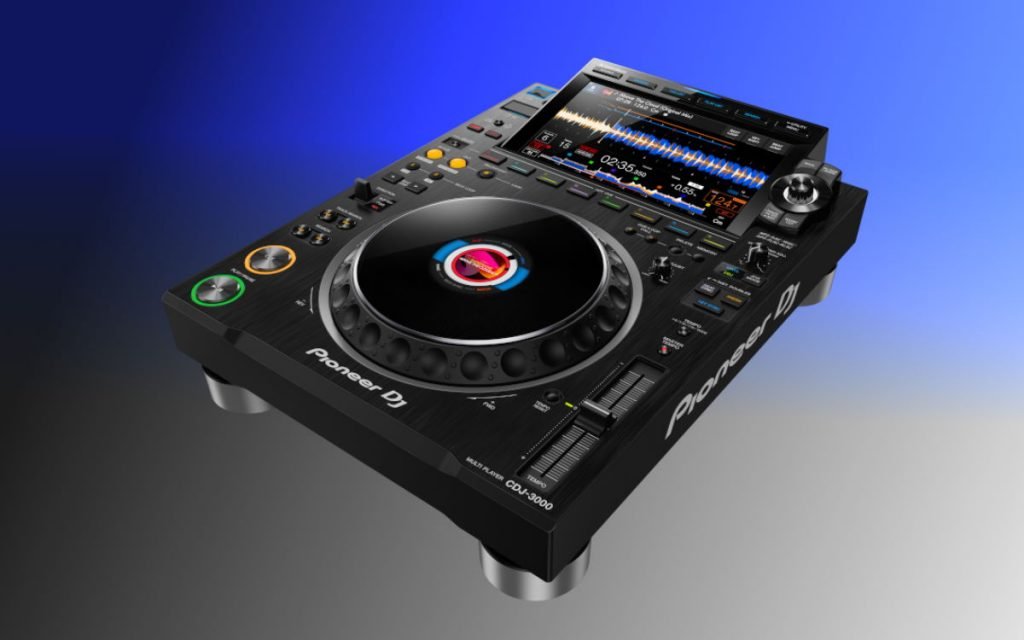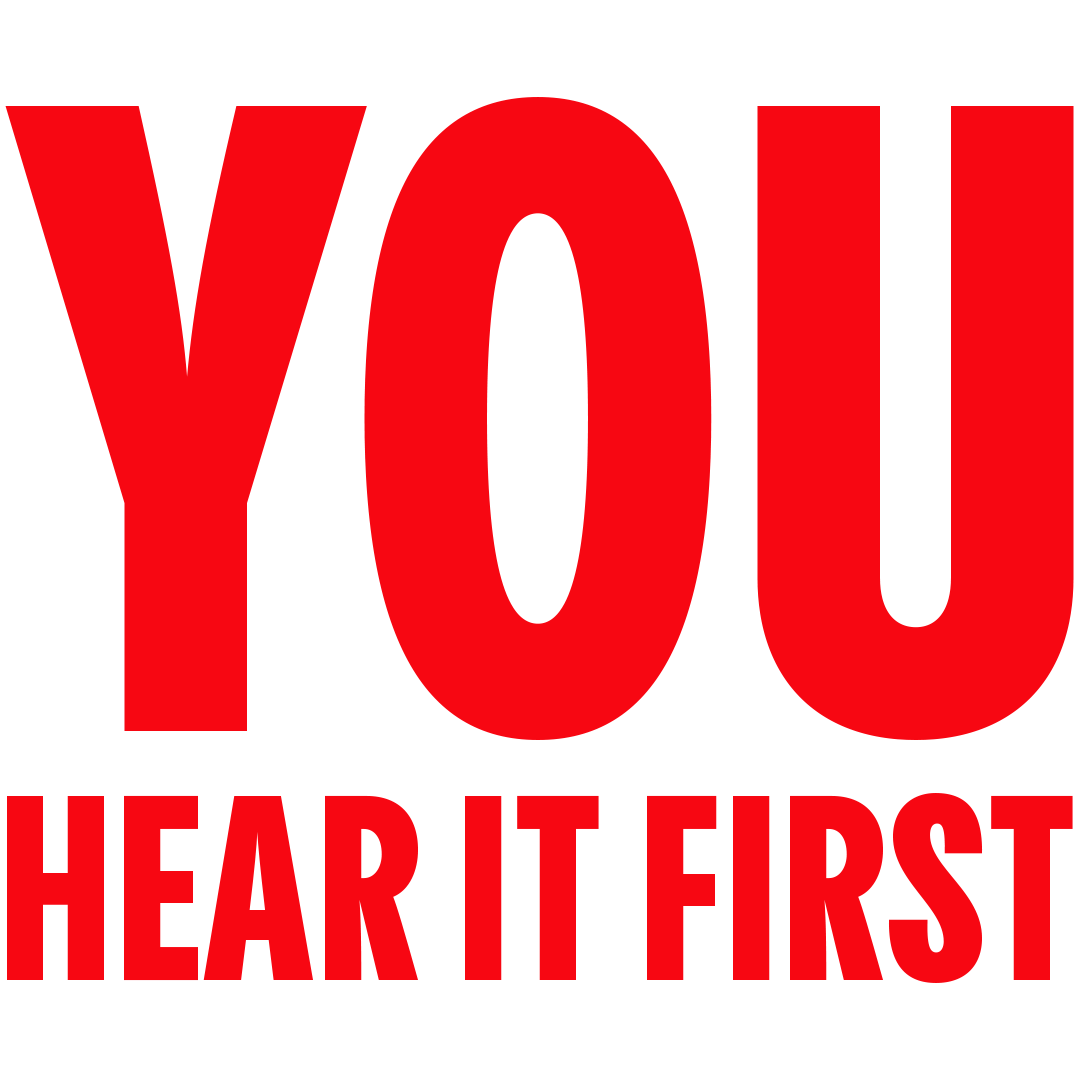
First impressions
The Pioneer DJ CDJ-3000 is an evolution, not a revolution. It’s an evolution of the CDJ-2000NXS2, and it improves significantly on several points. For starters, the screen. Finally, the top of the line CDJ player gets a top of the line screen. It’s big, it’s bright, and the refresh rate is finally up to standards. Secondly, there is the renewed jog wheel, now with a central LCD screen that shows track art, jog mode, and other details.
The hot cue buttons have been relocated to a new spot under the screen, and are now placed horizontally. On the inside, the CDJ-3000 has a new MPU (Micro Processing Unit) that really speeds things like loading tracks and cue points, displaying track data much, much quicker than the CDJ-2000NXS2.
Let’s dive into the details!
Features & functionalities
The screen

The screen is 9 inches in size, used LCD technology, and has HD resolution. This might be underwhelming when talking about tablets or phone screens but does feel very appropriate on the CDJ-3000.
In use, the screen feels smooth and above all, extremely functional. Everything is in the right place and it’s a breeze to find its way through the interface.
If you aren’t that much into touching a screen to move around your track library, the CDJ-3000 has physical buttons on the top to change the source, browse, access your tag list, playlist, search for tracks and access the (utility) menu. On the right side, you still have a convenient selector knob to navigate all of the functions, including 4 navigation buttons.

The CDJ-3000 screen’s size allows for much more information to be available when browsing for tracks. This feels very much like browsing on your laptop to be honest. A small preview waveform is available for each track and can be clicked to preview the track in your headphones, and you configure what columns you want to see (track name, artist, bpm…) when browsing. Also, it’s very simple to order track by any of the presented columns.
The lack of multi-touch is apparent, as some features that you might come to expect in a media player, such as swiping to load tracks, are absent here. But apart from that, using the screen is a joy, and MUCH better compared to using the CDJ-2000NXS2’s screen.
Previewing tracks
The CDJ-3000 allows now to preview tracks in different ways. Touch Preview allows previewing a track by simply touching the mini waveform in the tracklist. If you have a Pioneer DJ mixer with Link Cue like the DJM-900NXS2 and have your players connected by Pro DJ Link, you can do this on any of the connected players.

There is also Touch Cue, which allows previewing any part of the playing track in your headphones. You do this by touching the full-length waveform on the bottom of the screen. Again, if you have a mixer that supports Link Cue, this is possible on any connected player.
These are really cool innovations since it makes it possible for DJs to preview tracks and cue points without actually having to load anything, saving them time, and improving the DJ workflow.
3-band waveforms

The CDJ-3000 has built-in support for 3 band waveforms as analyzed by Rekordbox. This type of waveform shows the high, mids, and lows in a track and is very helpful in understanding the composition of a track without having to listen to it.
Of course, if you prefer the more regular RGB version or blue version, it’s possible to set the player to any of those as well.
Stacked waveforms

Stacked waveforms bring a feature that has existed for years on DJ controller software finally to the CDJ. This means that you can now see the waveform of the cued track displayed as a small waveform on the master player, making it easier to mix visually. Obviously, this feature only works when two players are connected with Pro DJ Link
Mass storage options

The CDJ-3000 has a USB slot and an SD card slot that accepts Rekordbox analyzed track collections. As already noted, a CD slot is absent, but that shouldn’t be a problem for modern DJ’s, since most have transitioned to USB sticks or memory cards anyway. Be aware that the CDJ-3000 cannot analyze tracks on the fly, it only reads pre-analyzed tracks. This is a bit disappointing since the player has more than enough processing power onboard in order to do this, so maybe that’s something that will come in the future through firmware updates.
It’s obviously also possible to connect your setup to your computer and use the computer as mass storage (playing from your Rekordbox music collection), or even use your CDJ setup as a Rekordbox DJ controller setup. Finally, you can hook up an IOS device running Rekordbox and DJ from the tracks on your mobile device.
Hot cues

Another remarkable change that the CDJ-3000 brings is the new hot cues placement right under the screen. There are eight of them and while you might think they could additional touches on the jog wheels, in my testing that wasn’t the case. I actually got used to them being there quite quickly.
I’m a bit disappointed that these hot cues aren’t actual multi-purpose performance pads as one might expect, it feels a bit like a missed opportunity.
Performance features

The CDJ-3000 has 3 very interesting features accessible from the touchscreen: beat loop beat jump and key shift.
The beat loop turns into a loop roll if you use it in combination with the slip button. I would have really liked to have the possibility to trigger these from the pads, but as said, the pads are hot cues only.
Next, there is the beat jump feature. This feature is accessible from the screen directly or using the beat jump buttons on the deck.

This is an extremely handy feature, and you can easily change the number of beats using the shift button in combination with the beat jump buttons.
Then we have the key shift feature.

Key shifting allows you to manually adapt the key of the track, and you can use it in a variety of ways, from creating your own build-ups and transition to adapting the key of the incoming track before throwing it into the mix.
The CDJ-3000 also features Key Sync, which automatically syncs the key of two (or more) tracks.

This can be a fantastic feature when used wisely, but keep in mind that matching the key of two tracks can make mixes too polished and clean, so to be used…with moderation. I personally think that often, the key change is a key (pun intended) part of a mix, as it signals change and a new track to the floor.
The jog wheel

Then we come to literally the centerpiece of the CDJ-3000: the jog wheel. I must say, I’m quite impressed with it. I really love the smoother, less mechanical feeling of it compared to the jog on the CDJ-2000NXS2. I know many fans of previous models will disagree, but I really like it. The jog also has an enhanced central LCD screen that shows track artwork and other key track data. I would love to see the possibility to show something centrally as well, (BPM, deck number…) that can be configured in the settings.
Connections

The CDJ-3000 has RCA and Digital audio outputs, an RJ-45 ProDJ link ethernet connection, and a USB connector on the back.
The A/C connector is secured so that I cannot be easily removed by accident.
Conclusions
So how good is the CDJ-3000? I would say: really, really good. I would also say that the competition is strong, and there are players out there that have more advanced tech features. As you can see from my review, there are a few design implementation choices that I’m a bit disappointed with here (for example the hot cues versus performance pads) but overall I think the CDJ-3000 is a very solid offering from Pioneer DJ.
The CDJ-3000 is, as expected, an evolution of the CDJ-2000NXS2, and that is important to take into account. Pioneer DJ has to find a balance between innovating and keeping existing users happy, and that’s not easy to do.
Professional DJs using Pioneer DJ gear are not only looking at hardware, but they take into account the entire ecosystem. And the Pioneer DJ ecosystem is a solid one. This player, together with Rekordbox, is a very strong combination and work together seamlessly. And that is what the pro DJ is really looking for: seamless integration of hardware and software, combined with a familiar yet technologically advanced environment. And in these objectives, Pioneer DJ succeeds with the CDJ-3000.
Video Review
Written by: AIT

Post comments (0)